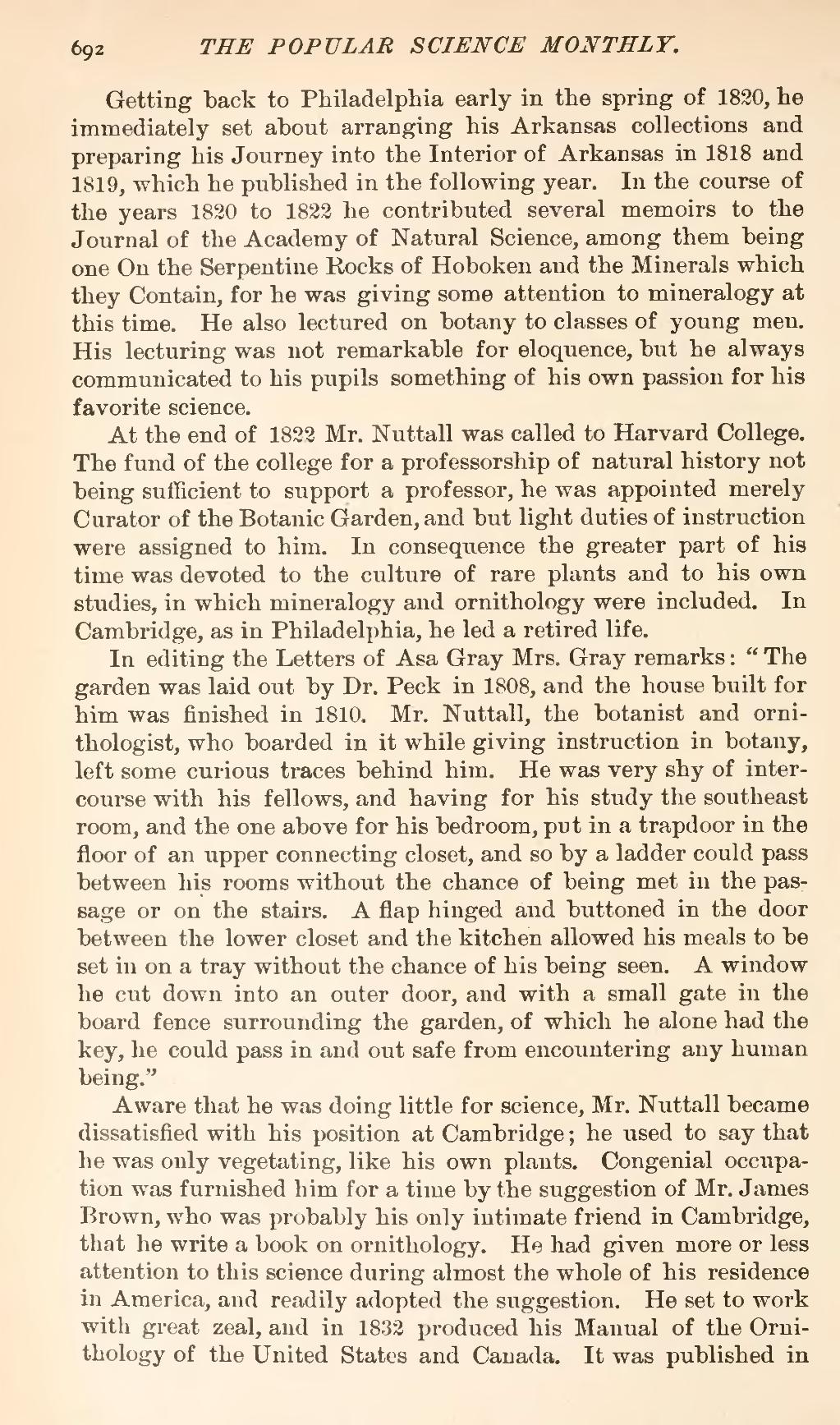Getting back to Philadelphia early in the spring of 1820, he immediately set about arranging his Arkansas collections and preparing his Journey into the Interior of Arkansas in 1818 and 1819, which he published in the following year. In the course of the years 1820 to 1822 he contributed several memoirs to the Journal of the Academy of Natural Science, among them being one On the Serpentine Rocks of Hoboken and the Minerals which they Contain, for he was giving some attention to mineralogy at this time. He also lectured on botany to classes of young men. His lecturing was not remarkable for eloquence, but he always communicated to his pupils something of his own passion for his favorite science.
At the end of 1822 Mr. Nuttall was called to Harvard College. The fund of the college for a professorship of natural history not being sufficient to support a professor, he was appointed merely Curator of the Botanic Garden, and but light duties of instruction were assigned to him. In consequence the greater part of his time was devoted to the culture of rare plants and to his own studies, in which mineralogy and ornithology were included. In Cambridge, as in Philadelphia, he led a retired life.
In editing the Letters of Asa Gray Mrs. Gray remarks: "The garden was laid out by Dr. Peck in 1808, and the house built for him was finished in 1810. Mr. Nuttall, the botanist and ornithologist, who boarded in it while giving instruction in botany, left some curious traces behind him. He was very shy of intercourse with his fellows, and having for his study the southeast room, and the one above for his bedroom, put in a trapdoor in the floor of an upper connecting closet, and so by a ladder could pass between his rooms without the chance of being met in the passage or on the stairs. A flap hinged and buttoned in the door between the lower closet and the kitchen allowed his meals to be set in on a tray without the chance of his being seen. A window he cut down into an outer door, and with a small gate in the board fence surrounding the garden, of which he alone had the key, he could pass in and out safe from encountering any human being."
Aware that he was doing little for science, Mr. Nuttall became dissatisfied with his position at Cambridge; he used to say that he was only vegetating, like his own plants. Congenial occupation was furnished him for a time by the suggestion of Mr. James Brown, who was probably his only intimate friend in Cambridge, that he write a book on ornithology. He had given more or less attention to this science during almost the whole of his residence in America, and readily adopted the suggestion. He set to work with great zeal, and in 1832 produced his Manual of the Ornithology of the United States and Canada. It was published in
